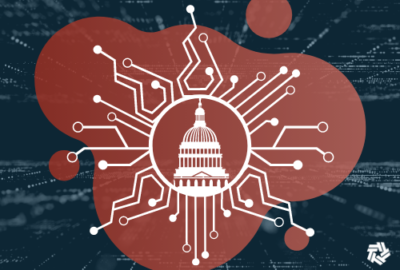

Dorothy Aronson, NSF’s chief information officer and soon-to-be chief data officer, said the agency has created a central repository of low-code and no-code t...
Lots of agencies talk about fostering a culture of innovation among their employees, but the National Science Foundation has been so successful in those efforts that it’s now supporting that culture with infrastructure. Dorothy Aronson, NSF’s chief information officer and soon-to-be chief data officer, said the agency has created a central repository of low-code and no-code tools that employees have created to improve and automate their own workflows, to share them across the organization.
“We have implemented a way of sharing those inventions. We have put together a, let’s call it a bookshelf or repository, called Hopper, named after Grace Hopper, because she was an innovative IT person,” Aronson said on Federal Monthly Insights – Feature Management – Cyber Perspective. “So we have this place where people can put their inventions and share them with each other and improve upon each other’s work or comment upon each other’s work. And that’s become a wonderful environment for innovators.”
For example, Aronson said, an employee might notice that every time they invite a guest to a meeting, they also have to send an email. A low-code or no-code solution might automate the generation of that email, triggered by the invitation.
And because these solutions are low-code or no-code, end users with no experience in application development are able to automate their own workflows themselves. That’s allowing them to reduce the amount of manual, repetitive tasks that can preoccupy their time.
“It’s amazing and really exciting to see the breadth of people who didn’t think of themselves as I.T., people who are able to look at their own desk and say, ‘how do I make things better here?’ And then go off on their own and make — with some help from coders, but mostly on their own — to make solutions happen,” Aronson told the Federal Drive with Tom Temin.
NSF has also implemented meetings every other Friday, where innovators showcase their work to other employees. Then their peers are able to critique, find flaws or suggest improvements. They also ensure that these innovations don’t run afoul of guardrails and best practices that NSF has put in place. For example, NSF is currently developing one that requires anyone using data to identify the data source.
“We call them mostly guardrails as opposed to policies, because we don’t want to deter people from trying. The rules get tighter as the product becomes more mature,” she said.
Mostly, the idea is to ensure people are developing with basic tools approved for network use, and that they aren’t exposing sensitive data outside the agency.
That’s especially important because some of these tools eventually get integrated into the main system. That’s allowing NSF to more quickly modernize its business processes, but it’s also creating an interesting situation where Aronson said these low-code solutions are actually outlasting platforms.
“It can only change quickly if the solutions are built quickly,” she said. “But building them quickly the first time doesn’t mean that that’s their destination technology platform.”
It’s also allowing individual program offices to spearhead solutions, rather than having them originate in the central IT office. For example, Aronson said NSF’s Directorate for Technology, Innovation and Partnerships (TIP) is working to build external partnerships to allow NSF to go from lab to market more quickly. So TIP is building out a centralized partnership repository to share that data, rather than each person keeping their own “Rolodex of information about partnerships,” as Aronson put it.
The idea is that this repository will eventually become part of NSF’s basic business system.
“And it will, even from the beginning, possibly share data. So the place where things are shared is really in the data. And that’s the important thing because it’s actually the partnership data that’s important to people,” Aronson said. “So in addition to the systems that capture information, like the ones we’re describing, our transactional business systems that capture information, there’s also an enterprise data warehouse and a data lake where this data is co-mingled. So from most people’s perspective, however this information is captured, they are able to see it together in a single view.”
Copyright © 2024 Federal News Network. All rights reserved. This website is not intended for users located within the European Economic Area.
Daisy Thornton is Federal News Network’s digital managing editor. In addition to her editing responsibilities, she covers federal management, workforce and technology issues. She is also the commentary editor; email her your letters to the editor and pitches for contributed bylines.
Follow @dthorntonWFED


